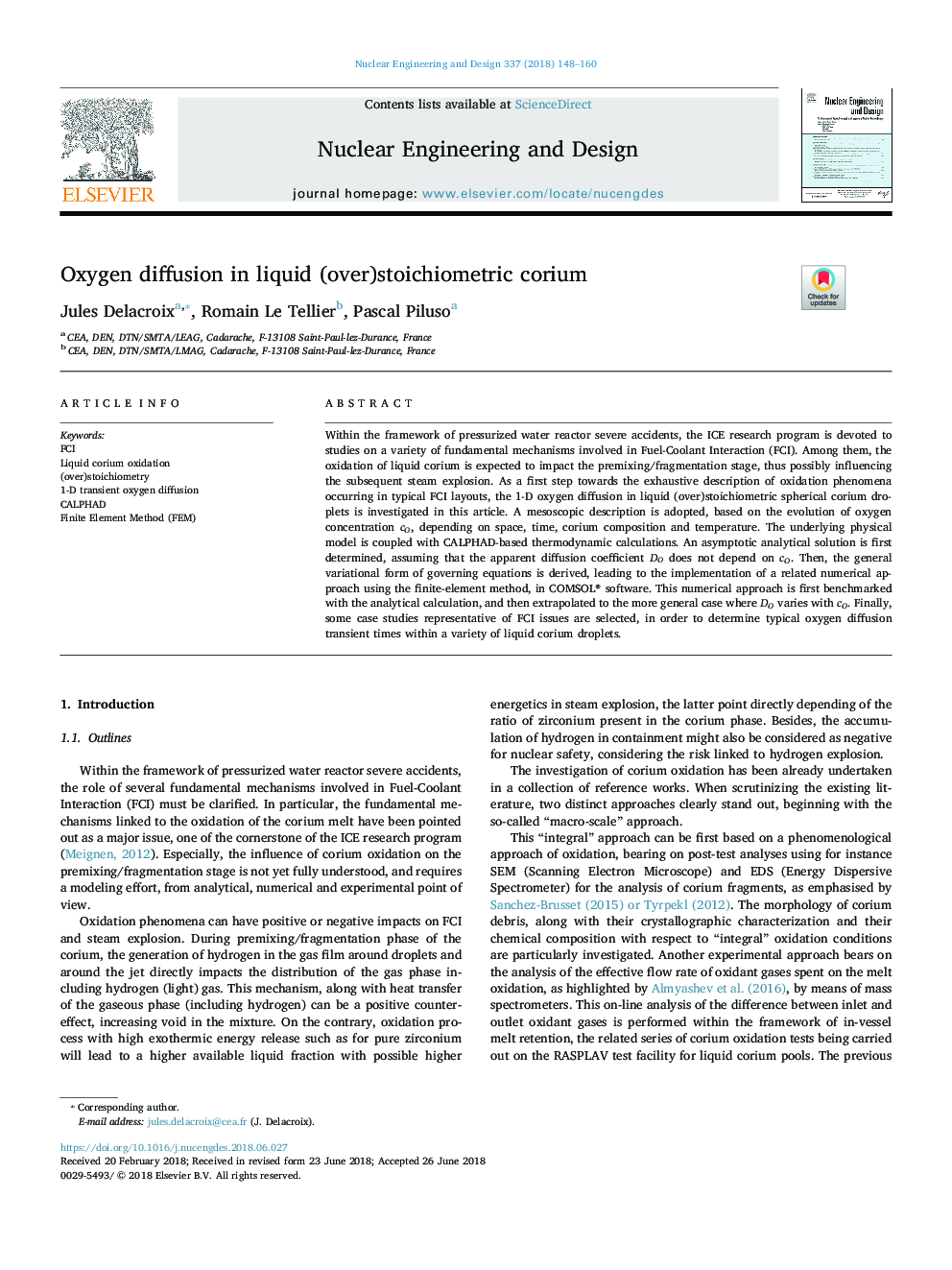| Article ID | Journal | Published Year | Pages | File Type |
|---|---|---|---|---|
| 6758538 | Nuclear Engineering and Design | 2018 | 13 Pages |
Abstract
Within the framework of pressurized water reactor severe accidents, the ICE research program is devoted to studies on a variety of fundamental mechanisms involved in Fuel-Coolant Interaction (FCI). Among them, the oxidation of liquid corium is expected to impact the premixing/fragmentation stage, thus possibly influencing the subsequent steam explosion. As a first step towards the exhaustive description of oxidation phenomena occurring in typical FCI layouts, the 1-D oxygen diffusion in liquid (over)stoichiometric spherical corium droplets is investigated in this article. A mesoscopic description is adopted, based on the evolution of oxygen concentration cO, depending on space, time, corium composition and temperature. The underlying physical model is coupled with CALPHAD-based thermodynamic calculations. An asymptotic analytical solution is first determined, assuming that the apparent diffusion coefficient DO does not depend on cO. Then, the general variational form of governing equations is derived, leading to the implementation of a related numerical approach using the finite-element method, in COMSOL® software. This numerical approach is first benchmarked with the analytical calculation, and then extrapolated to the more general case where DO varies with cO. Finally, some case studies representative of FCI issues are selected, in order to determine typical oxygen diffusion transient times within a variety of liquid corium droplets.
Related Topics
Physical Sciences and Engineering
Energy
Energy Engineering and Power Technology
Authors
Jules Delacroix, Romain Le Tellier, Pascal Piluso,
